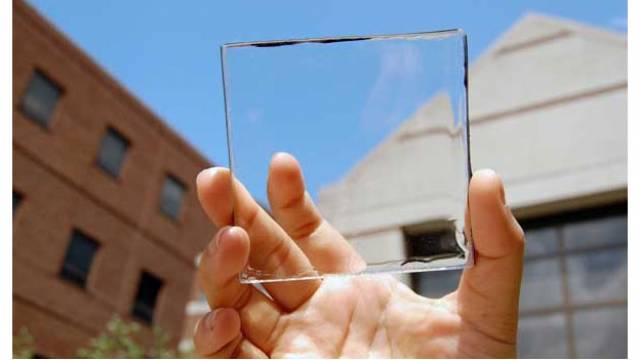Researchers from Michigan State University have developed a luminescent solar concentrator that’s transparent, offering the promise of completely clear energy-harvesting windows and smartphone screens.
Solar energy is, today, present almost everywhere. Thanks to the work of researchers at Michigan State University, however, that power is now completely transparent.
The team’s recently developed transparent luminescent solar concentrator (LSC) can create solar energy that is not visible on clear surfaces such as windows or glass displays.
“No one wants to sit behind coloured glass,” says Richard Lunt, an assistant professor of chemical engineering and materials science.” “It makes for a very colourful environment, like working in a disco. We take an approach where we actually make the luminescent active layer itself transparent.”
Not only is the new LSC less colourful than other solar cells designed to encompass plastic materials, it’s also more efficient, offering a conversion efficiency of close to 1%.
To create the clear concentrator, Lunt and the MSU team, which includes MSU doctoral student Yimu Zhao, assistant professor of chemistry Benjamin Levine, and doctoral student Garrett Meek, developed small organic molecules that harvest the sun’s power by way of “specific non-visible wavelengths of sunlight.”
According to Lunt, “We can tune these materials to pick up just the ultraviolet and the near infrared wavelengths that then ‘glow’ at another wavelength in the infrared.”
That ‘glow’ is then converted to electricity by way of photovoltaic solar cells that are grouped in thin strips around the edge of the plastic.
“Because the materials do not absorb or emit light in the visible spectrum, they look exceptionally transparent to the human eye,” he says.
The transparent concentrator’s efficiency could reach 5% if fully optimized; the current ‘best’ LSC offering taps out at 7%.
Though still in the early stages of development, Lunt believes that the technology offers a great deal of promise in potential commercial or industrial applications – such as in building windows or smartphone screens – at a price that isn’t colour- or cost-prohibitive.



